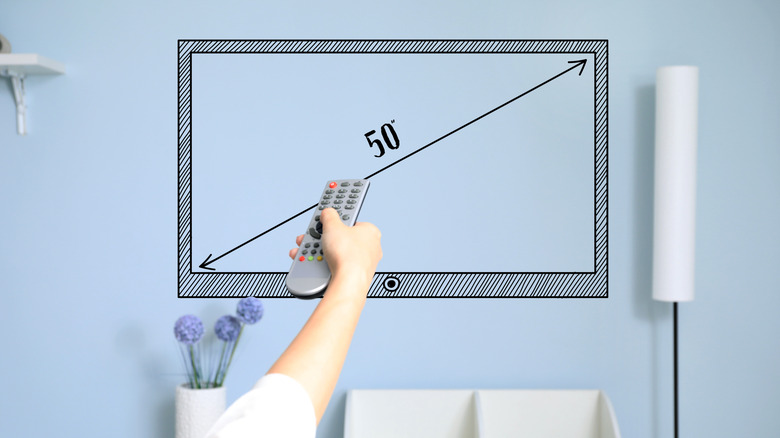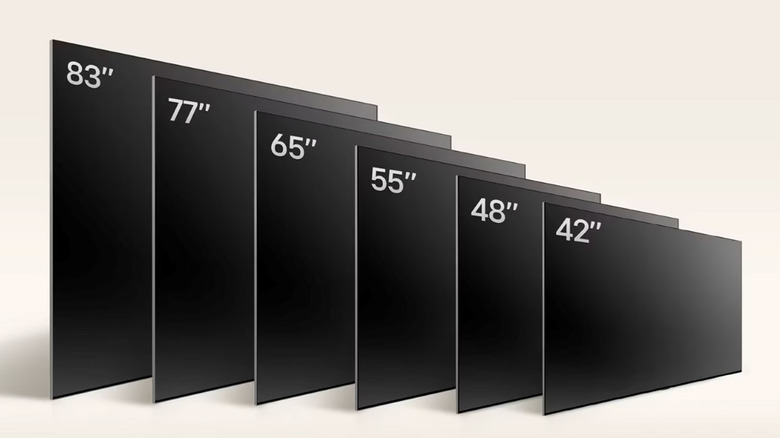How To Measure Your TV The Right Way
One of the most important specifications of any TV is its size. This gives you a clear idea of how well the TV will look in a room, the optimal viewing distance, and whether it will fit in a cabinet or need to be mounted on the wall. Although TVs are typically rectangular, you'll often hear them referred to by a single size, like 32-inch, 55-inch, or 75-inch. However, this number doesn't refer to your TV's height or width.
To measure your TV's screen size, you'll need a measuring tape or a ruler. Use it to measure diagonally from the top-left corner of the screen to the bottom-right corner. Make sure you don't include the side bezels in your measurement. The diagonal length you get is what manufacturers use to label the TV's screen size.
A major reason why TVs are measured diagonally is that they offer a simple way to convey the overall size. Unlike before, modern-day TVs are much slimmer and have minimal bezels, so a single measurement can give you an idea of how big the TV is without overwhelming them with numbers. For instance, a 42-inch TV will have a screen approximately 37 inches wide and 21 inches tall. Note that bigger isn't always better when it comes to TV sizes. Your overall experience will also depend on other factors such as, the resolution, display technology, viewing distance, and content quality.
How to measure physical dimensions of your TV
When shopping for a TV, you'll typically see the screen size highlighted everywhere, including the product name, images, and specifications. However, since this measurement only refers to the diagonal screen size, it won't tell you the TV's actual height, width, or depth. Thankfully, these dimensions are also easy to measure.
To measure the width, start from the left edge of the TV, including the bezel, and measure to the right edge. For the height, measure vertically from the top edge to the bottom edge. If you are using a TV stand, you'll need to measure all the way to the bottom of the stand. Finally, you can measure your TV's depth from the extreme front of the TV to the extreme back of the TV. Once you have all the physical dimensions of your TV, you can easily determine if it will fit in a cabinet or is suitable for wall mounting.
Keep in mind that if you're measuring width and height to calculate the aspect ratio, you'll need to exclude the bezels. Once you have both measurements, you can determine the aspect ratio by dividing the screen width by the screen height. Most modern TVs have a 16:9 aspect ratio, but if you have an older model, it might be 4:3.

